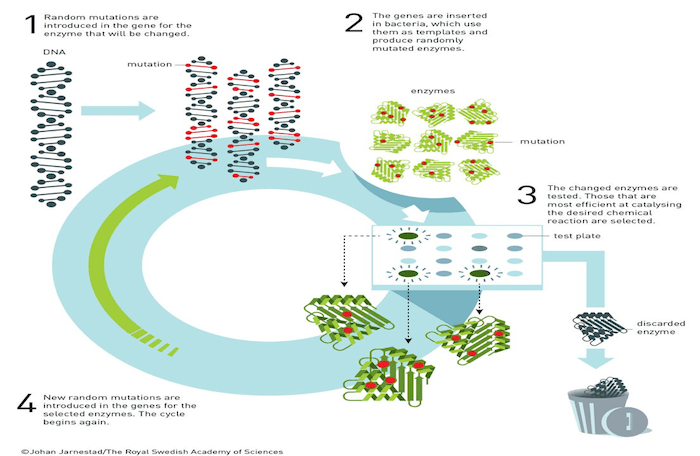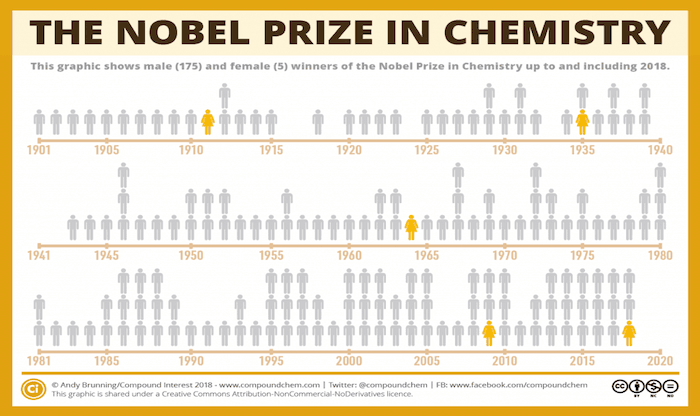2018 Nobel Prizes: An Insight into the Winners and Their Accomplishments
Key Skills Gained From Learning Chemistry
October 9, 2018Why Study at Julian Chemistry Tuition Centre
December 28, 2018
Every year, in the first week of October, few lucky individuals are awarded a Nobel Prize; a recognition in academics, cultural and scientific advances. And October 2018 was no different, as select groups of scientists were on the spotlight for their hard work and dedication in their fields. This award is given to continue the age-old tradition that began in 1901.
Usually, panels at the Royal Swedish Academy of Sciences in Stockholm review and subsequently forward their short lists to a selection committee for the voting of the winners of the Nobel Prize winners in Chemistry and Physics. Another group at the Karolinska Institute, a medical university in Stockholm, handles nominations for the prize in physiology or medicine. It’s worth mentioning that no one can ever nominate themselves. Each year, scientists from all walks of life are invited to nominate individuals whom they think are eligible and deserving of the prestigious award.
Generally, we have Nobel Prizes in Peace, Physics, Chemistry, Literature, Physiology or Medicine and Economic Sciences. 2018 has been a monumental year as we had two female scientists win the Nobel Prize in Chemistry and Physics. Without further ado, let’s take a look at the 2018 Nobel Prize winners in Chemistry and Physics and their contributions to the world of science.
Chemistry
Frances H. Arnold
A Linus Pauling Professor of Biochemistry at the California Institute of Technology made headlines by becoming the fifth woman to win the Chemistry Nobel Prize for her work in the directed evolution of enzymes.
Arnold conducted the first directed evolution of enzymes in 1993 and has ever since been working tirelessly to refine the methods that can be used to develop new catalysts. Some of the applications of the Arnold’s enzymes include environmentally friendly manufacturing of Pharmaceuticals and the production of renewable fuels. Below is a flowchart showing Arnold’s work in a nutshell.

Sir Gregory P Winter
A British biochemist affiliated to the Division of Protein and Nucleic Acid Chemistry at the MRC Laboratory of Molecular Biology, Cambridge, UK. Winter is popularly known his work on phage display and humanization of antibodies that have by far revolutionised the field of biochemistry. His efforts led to the approval of Adalimumab as the first phage-derived antibody. In as much as we have had new techniques being implemented, Winter’s methodology still stands as one of the most important techniques being employed in antibody discovery as well as the development of antibody-based therapeutics. What’s more, Sir Gregory’s phage display has been used to produce antibodies that have the ability to not only neutralise toxins but also counteract autoimmune disease and cure metastatic cancer. Isn’t this amazing?
The following is a summary of Sir Gregory Winter’s phage display in action.

George P. Smith
Professor emeritus of biological sciences at the University of Missouri in Columbia was named alongside Frances Arnold for his immense contribution towards harnessing evolution to come up with new antibodies and enzymes. Smith is also recognized as the brain behind the development of the Phage display technology that scientists use when studying the interactions between peptides, proteins and DNA. Just to clarify, Sir Gregory Winter did not develop this technology, he just used it to develop antibodies that are being used to target certain cells.
Phage Display works by having bacteriophages (viruses that infect bacteria) connect proteins to the genetic information used to encode them. Thanks to George Smith’s discovery, we have antibody therapies for the treatment of rheumatoid arthritis, cancer and sclerosis.
Physics
Just like in Chemistry, we had three laureates sharing the prestigious award in this subject. These were Arthur Ashkin, Gérard Mourou, and Donna Strickland.
Donna Strickland
The Canadian optical physicist made history by being the third female physicist to win a Nobel Prize after 55 years. The first Nobel Prize in physics went to Marie Curie, in 1903, followed by Maria Goeppert-Mayer in 1963.
Strickland together with Gérard Mourou invented the Chirped Pulse Amplification (CPA), a standard technique for subsequent high-intensity lasers. This technique paved the way towards not only the shortest but also most intense laser pulses ever created.
How does the CPA technique work? First, the laser pulses are stretched to lower their peak power, followed by amplification and finally compression. Compression of a pulse in time makes it shorter, hence more light is packed together in the same tiny space, leading to the increase in the intensity of the pulse. Today, this technique is being used in millions of corrective eye surgeries.
Why more women don’t win Nobel prizes in Science
With the Nobel Prize week for 2018 gone, the only question lingering on our minds is how many female scientists made the cut? Just two. Frances H. Arnold and Donna Strickland. If anything, this is a rarity. Before Frances Arnold, Ada E. Yonath won it in 2009, this was after 45 solid years. Here is a graphic breakdown of all the Nobel Prize winners in Chemistry since 1901

The graphic above shows 176 male figures against 5 female figures. Why don’t we have a balance of male and female winners? Here are some of the reasons holding women back.
Specious stereotypes
Traditional stereotypes work with the assumption that women ‘don’t like math’ and ‘aren’t good at science’. Claims that both men and women seem to agree on –however, researchers have empirically disputed these claims, stating that women avoid Science, Technology, Engineering and Mathematics (STEM) education not because of cognitive inability, rather because of early exposure and experience with educational policy, stereotypes, cultural context, STEM and a lack of exposure to role models.
Currently, there are programmes and educational reforms aimed at empowering girls to try and improve the representation of women in STEM fields.
STEM ceiling
Women have for years faced a number of structural and institutional barriers in academic STEM careers. These barriers include lower job satisfaction, interpersonal mistreatment and poor academic perceptions.
Donna Strickland and Frances Arnold winning Nobel Prizes is a major accomplishment; doing so as women who have almost certainly faced more barriers than their male counterparts is, in our view, monumental.
Given the fact that chemistry is a complex subject, a lot of students end up struggling to grasp chemistry concepts. In many cases, you find students uninspired. It’s every parent’s joy to see their children achieving excellent grades in all subjects, so how do we make this happen? Julian Tan, because of his love for chemistry, decided to start Julian Chemistry, a tuition centre to provide best-quality Chemistry tuition to O Level and A Level students. However, this does not imply that schools are at fault, it’s just that in a classroom set up, teachers have to divide their attention amongst all their students and at the same time trying to teach topics within the allocated timeframe, therefore it’s not easy for the teachers to move at student’s pace. At Julian Chemistry, students get to work with a private tutor who’s an expert in this field.
At Julian Chemistry tuition centre, we pride in seeing students excel in Chemistry, and as a matter of fact, many former students have gone to excel academically in Ivy League universities such as Harvard, Upenn, Cambridge, and Oxford among others. In addition, we work towards ensuring female representation in STEM fields, and in 2017, we were honoured to receive the Frederick Emmons Terman Engineering Scholastic Award.
In sum, we need to do away with the bias, systematic constraints and expectations existing in the academic institutions, as they only work to impede the careers of women scientists. Let’s have more women studying chemistry both in A-Level and university. “Quality science education is a pillar for a more sustainable future – we must invest in it, to empower every woman and man, to catalyse the innovation and creativity we need for the century ahead.”– Ms Irina Bokova, director general of UNESCO.



